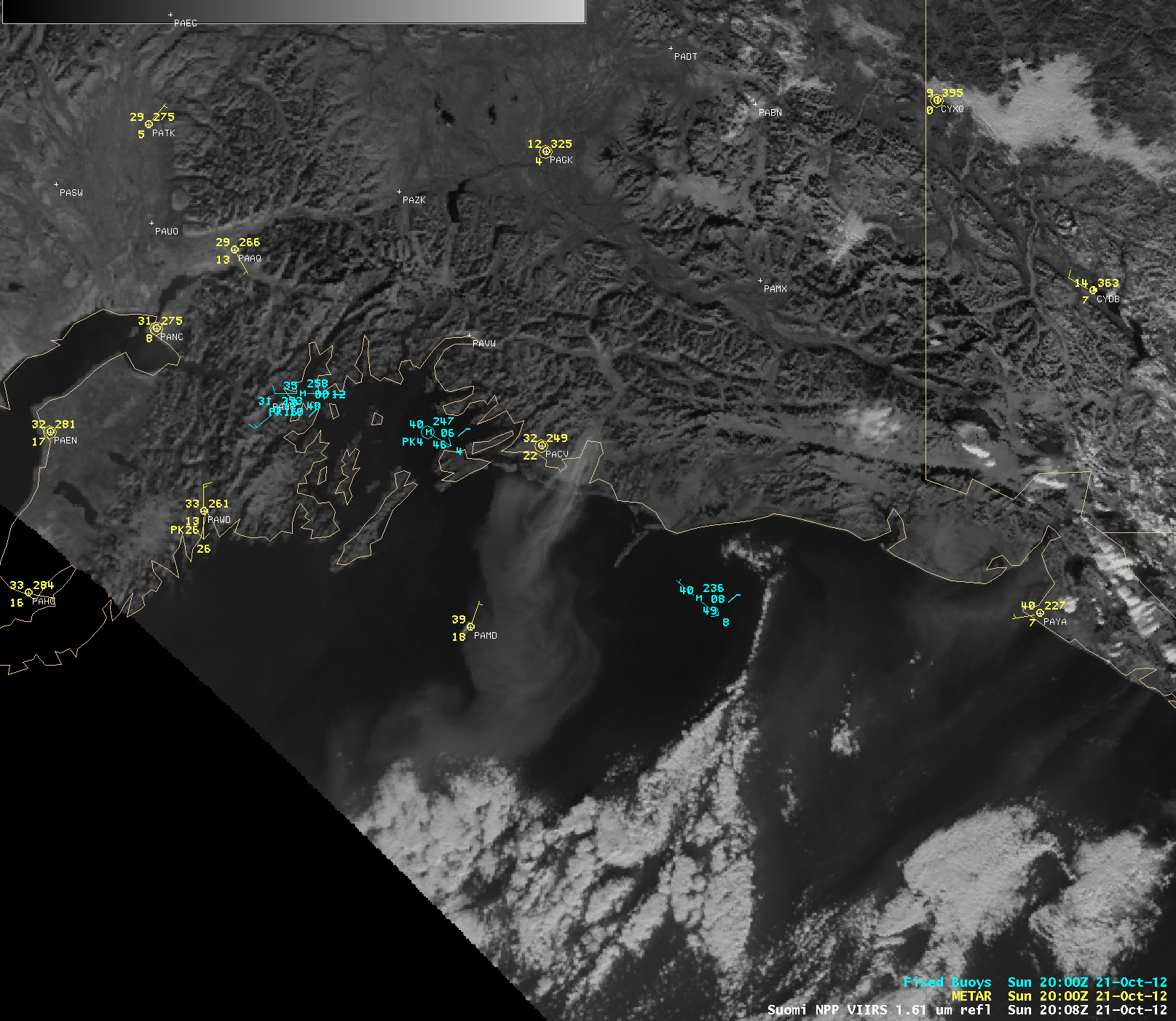Glacial silt blowing off the coast of Alaska
As high pressure associated with cold arctic air began to build over the eastern interior of Alaska and the Yukon Territory of Canada, a strong pressure gradient created intense gap winds through the channeled terrain of south-central Alaska on 21 October 2012. These winds stirred up glacial silt and then carried it down the valleys and toward the coast. GOES-15 0.63 µm visible channel images (above; click image to play animation) showed the hazy signature of a particularly large airborne plume of glacial silt as it moved offshore over the adjacent offshore waters of the Gulf of Alaska.
A more detailed view is provided by Suomi NPP VIIRS 0.64 µm visible channel images (above) and 1.61 µm near-IR “snow/ice channel” images (below). The largest glacial silt plume was blowing southward out of the Copper River valley (just east of Cordova, station identifier PACV) and across Prince William Sound toward Middleton Island (station identifier PAMD). Additional smaller glacial silt plumes could be seen farther east on the 20:08 UTC image, in the vicinity of Yakutat (station identifier PAYA). On the previous day (20 October), northeasterly surface winds gusted to 28 mph at Middleton Island and 20 knots at Cordova — however, the gap winds emerging from the Cooper River valley were likely much stronger.



